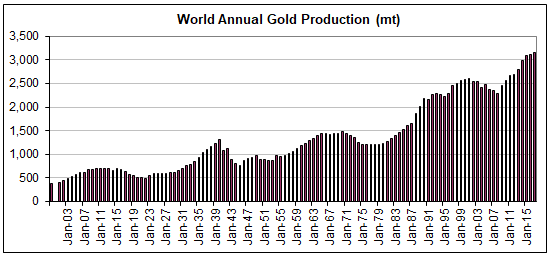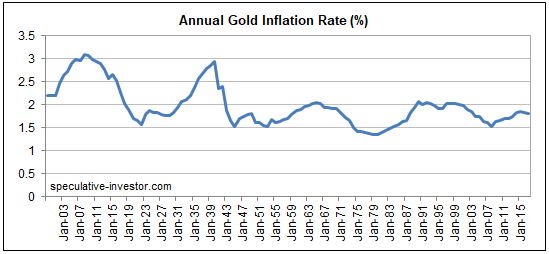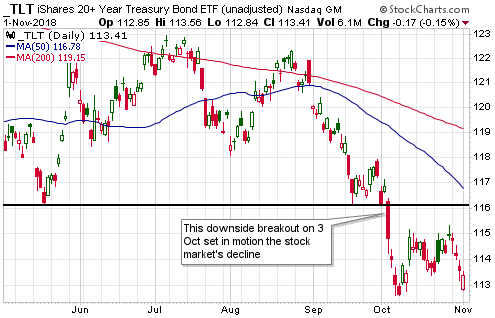[This is an excerpt from a commentary posted at TSI about three weeks ago]
In an article titled “China’s monetary policy must change” Alasdair Macleod discusses a path that China’s government could take to make the Yuan gold-backed and thus bring about greater economic stability in China. Keith Weiner pointed out some flaws in the Macleod article, including the fact that the sort of Gold Standard that involves pegging a national currency to gold is just another government price-fixing scheme and therefore doomed to fail. We will single out an error in the article that Keith didn’t address and then briefly explain why a gold-backed Yuan is a pipe dream.
This excerpt from the article contains the error we want to focus on:
“China’s manufacturing economy will be particularly hard hit by the rise in interest rates that normally triggers a credit crisis. Higher interest rates turn previous capital investments in the production of goods into malinvestments, because the profit calculations based on lower interest rates and lower input prices become invalid.”
No, higher interest rates do not turn previous capital investments in the production of goods into malinvestments. A rise in interest rates can help reveal malinvestments for what they are, but it doesn’t create them.
Malinvestment occurs on a grand scale when the banking system creates a large amount of money out of nothing, generating false interest-rate signals and making it seem as if the amount of real savings in the economy is much greater than is actually the case. In response to the misleading (artificially low) interest rates and the increased future demand that these interest rates imply (more saving in the present implies more consumption in the future), investments are made in productive capacity. Many of these investments will prove to be ill-conceived, because future demand will turn out to be lower than expected. The investments only appeared to make sense due to the false impressions created by banks loaning copious quantities of new money into existence.
Another way to look at the situation is that a build-up of real savings requires a temporary reduction in consumption. Think of it as a savings-consumption trade-off. People abstain from consumption in the short term so that they will be able to consume more in the long term. When that happens on an economy-wide basis, interest rates move lower.
The falling interest rate indicates that savings are being increased and, by extension, that consumption will be higher in the future. In other words, the falling interest rate is a message that long-term investments in productive capacity are likely to pay off. The problem is that when money is created in large amounts out of nothing, interest rates tend to fall at the same time as consumption is increasing. So, entrepreneurs are being told (by the falling interest rate) that consumption will be greater in the future and to invest accordingly, but at the same time consumers are spending aggressively and ‘tapping themselves out’. Naturally, this doesn’t end well.
The crux of the matter is that malinvestment stems from artificially low interest rates. Also, once it has happened, it has happened. Rising interest rates can be part of the process via which the mistakes are revealed, but the mistakes won’t disappear if interest rates are prevented from rising. Putting it another way, it is not possible to avoid the painful consequences (economic recession or depression) that follow a period during which malinvestment was rife. This is relevant, because the Macleod article argues that interest rates could be kept low in China by linking the Yuan to gold and that by doing this the amount of existing investment that falls into the ‘mal’ category could be greatly reduced.
The reality is that regardless of what happens to interest rates in the future, the extent of the previous malinvestment is such that China’s economy will experience either a collapse or a very long period (probably at least a decade) of virtual stagnation. Given the control that the government has over the banking industry, we guess the latter.
The point is that linking the Yuan to gold wouldn’t be a way around the massive problems that are already baked into the cake. In any case this is a side issue, because there are two simpler reasons that the idea of a gold-backed Yuan is a non-starter.
The first reason is that in a world in which most international trades are US$-denominated, tying any currency apart from the US$ to gold would result in that currency’s exchange rate becoming as volatile as the US$ gold price. In fact, the exchange rate of the gold-backed currency would be totally determined by the performance of the US$ gold price. For example, if the US$ gold price were to rise by 20% in quick time then so would the exchange rate (against the US$) of the gold-backed currency.
The second and more important reason is that any government that implemented a Gold Standard would be relinquishing control of its currency. There would be no further scope for the manipulation of interest rates and currency exchange rates. Also, there no longer would be any scope for debt monetisation in particular and monetary stimulus in general. If we were to make an ordered list of the governments that are LEAST likely to give up these powers, China’s government would be at the top.
Summing up, linking the Yuan to gold would not prevent China’s economy from suffering the consequences of the widespread malinvestment of the past decade and probably would lead to much greater volatility in the prices of imports and exports. Most importantly, there is no way that the control freaks who lead the Communist Party of China are going to implement a monetary system that severely restricts their ability to intervene.
 Print This Post
Print This Post



